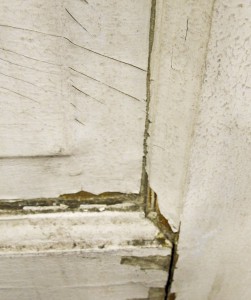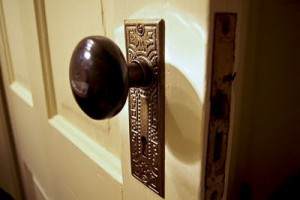A lot of people come to us asking for advice on lead paint. It’s a good thing to be concerned about, as it can pose serious health risks if handled improperly. In keeping with Urban Ore’s goal of highest and best use, properly stripping lead paint off an item is way better than sending that item – and its lead paint – to the landfill.
Below are some resources from the Web. Most of the focus is on lead paint in houses, but lead was also used on furniture and architectural elements prior to 1978, so the basic principles apply.
For starters, get the low-down on lead from the US Environmental Protection Agency. Accurate information is the best tool available in addressing the potential risks of lead paint.
/
Determining if it’s lead paint
Lead paint was banned from the US market in 1978. Not all paints used before that contain lead. You might be able to make an educated guess based on the age of the item, considering lead paint hasn’t been sold for nearly 35 years. For instance, a bookshelf made in 1993 likely doesn’t have lead paint.
In less obvious situations, safe is probably better than sorry. Either test it, or assume that it’s lead paint and proceed with proper encapsulation or removal.
California’s Department of Public Health offers helpful information on testing for lead paint. If you do test, it’s very important to test ALL layers of paint for lead. (I stripped a set of craftsman-style cabinets a few years ago and counted THIRTEEN layers of paint!) If lead paint is present, it’s more likely to be in the earlier layers – in other words, the coats that went on before 1978.
Not all test kits are equal. The Environmental Protection Agency (EPA) recognizes two test kits for accuracy, both of which are currently available online or in local hardware stores. I checked around and it looks like you can pick up a pack of 8 swabs for under $30 or 2 swabs for around $10.
/
Handling lead paint
Two approaches are commonly recommended for handling lead paint: encapsulation or removal. With encapsulation, a special liquid coating is applied over the lead paint to create a barrier. This only works if the lead paint is in good condition – not peeling or chipping off. It’s also not recommended for use on high-traffic or movable surfaces where abrasion would wear through the encapsulation layer. As an alternative to removal, encapsulation may be a good approach in some cases. Ultimately, though, the lead paint is still there.
If you plan to remove the paint, it’s best to avoid any process that might release lead fumes or dust. That means no dry sanding, scraping, or heat guns. The EPA provides general recommendations for large-scale DIY lead paint removal online. Paint strippers, which would be impractical for large projects, are great for smaller projects, like a dresser or a door. Because paint strippers remove the paint without sanding or heat, they remove lead paint without a lot of complicated equipment or setup. A quick online search turns up a wide selection of products made specifically for removing lead paint. Always follow the manufacturer’s instructions and recommendations closely.
/
Cleaning up after your project
Begin with the end in mind, and clean-up is the rightful end to any project. For this, some professional help in the form of a Denver maid service may come in handy. However, ensure that they have a thorough understanding of how the cleanup process works (as it involves hazardous material). Make sure they are aware of the difference between disposable and non-disposable waste. Even though, usually, you can dispose of all waste materials generated during any DIY project by hiring cheap skip bins sydney or wherever you live, it is always recommended not to dispose of hazardous waste in the same way. There may be special methods to dispose of such waste, so hire skip bins only for the other general waste and look for other safe ways to discard hazardous material.
Check with your local authorities about the proper disposal of stripped paint and any materials that may have been contaminated in the process. Lead paint and chemical paint strippers are both hazardous materials and shouldn’t be disposed of in the trash. And it is not just about the painting project but rather any kind of project taken up. Not only do hazardous substances material harm the environment, but when it enters people’s daily lives, they can have serious consequences for their health. Also, note that there are many types of hazardous waste materials that can harm the environment. So be mindful of not disposing of them the same way you dispose of other waste materials.
Before you start any project, it is important that you see what equipment/supplies you can get to catch any chemicals that have the potential to spill or leak out when handling them. You may want to look here for some ideas or speak to your local authorities to see if they have anything that can benefit you.
Alameda County residents can check with the county’s Household Hazardous Waste program at (800) 606-6606 for a complete list of materials accepted and for dates and hours of operation, or visit their website.
/
_______________
If you live in Alameda County, and you live in a house or apartment built before 1978, you can receive a free in-home lead consultation.
We hope you found plenty of information here to help you confidently choose to reuse.
/



